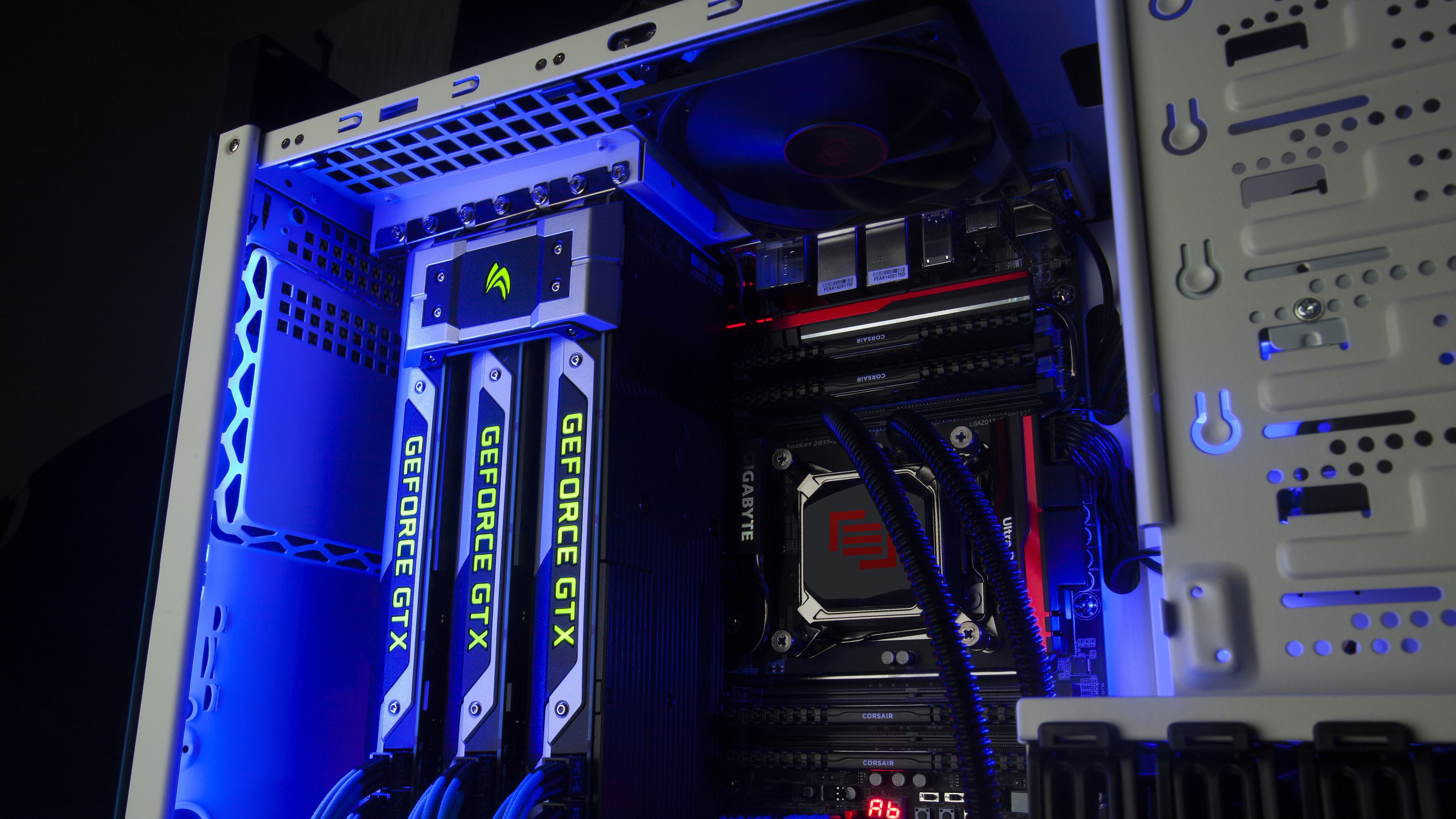Every new Maingear desktop will have a next-gen Nvidia Maxwell graphics card
All Maingear machines from now until forever

Maingear clearly isn't one to dip its toes in the water first before taking the plunge: the gaming hardware maker just revealed its desktops are going all-in on next-gen Nvidia graphics.
From now on, all new Maingear desktops will feature either a Nvidia GeForce GTX 970 or GTX 980 graphics cards. The GPUs are built on Nvidia's latest Maxwell architecture, lauded for its high-performing and power-efficient ways.
To put names to faces, the new GeForce graphics will be integral components of Maingear's SHIFT, F131, Vybe, Rush and Force desktop lines.
While Maingear was more than happy to tout mainlining next-gen graphic goodness straight to its desktops' veins, it didn't provide a release date or prices for the souped-up machines.
More Maxwell
Nvidia revealed its Maxwell-based GTX 970 and GTX 980 cards a few hours earlier, and Maingear is clearly giving the Kepler follow-ups a vote of confidence.
Though based on the same 28nm manufacturing process as Kepler, Maxwell gives a 135% performance boost to every core over its older compatriot.
GPU performance is also doubled per watt over Kepler, and Nvidia maintains Maxwell cards are suited for just about anything, including virtual reality and 4K HD displays.
Get daily insight, inspiration and deals in your inbox
Sign up for breaking news, reviews, opinion, top tech deals, and more.
We'll have to do some real-world testing to see if Maxwell and Maingear are a match made in desktop heaven, but rest assured we'll get our mitts on a machine before long.
- What are the best gaming laptops around?
Michelle was previously a news editor at TechRadar, leading consumer tech news and reviews. Michelle is now a Content Strategist at Facebook. A versatile, highly effective content writer and skilled editor with a keen eye for detail, Michelle is a collaborative problem solver and covered everything from smartwatches and microprocessors to VR and self-driving cars.
